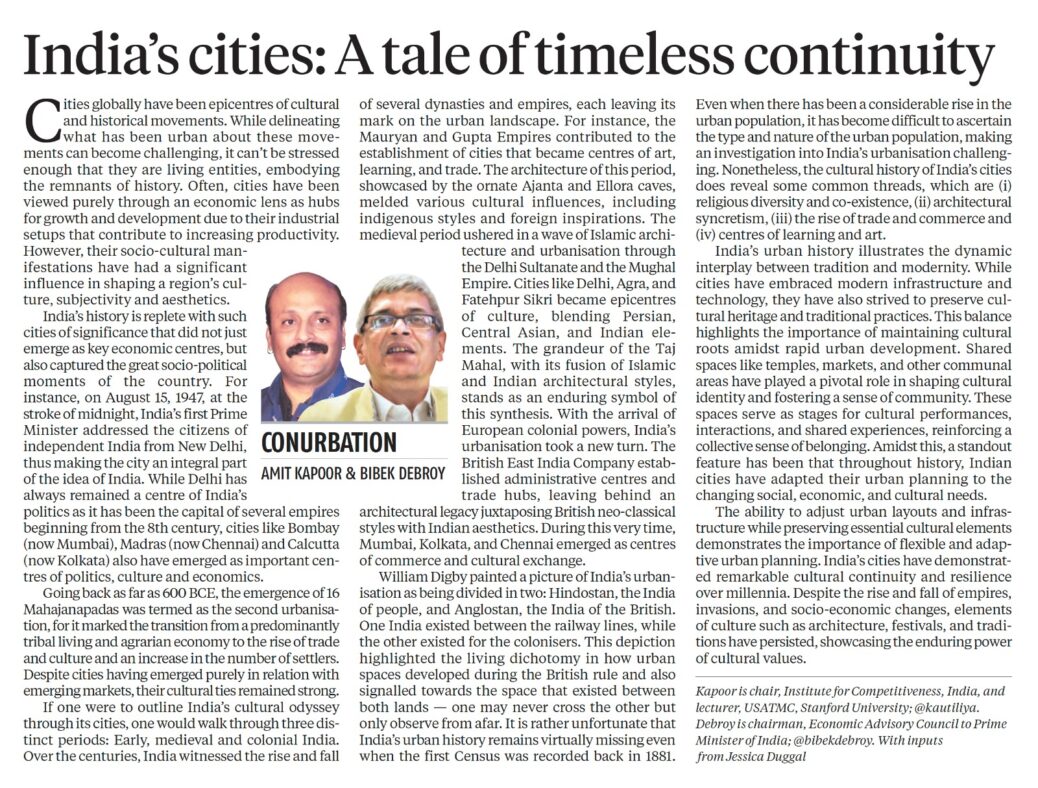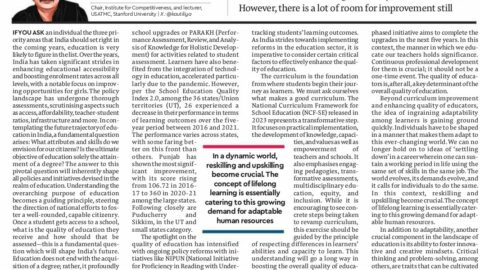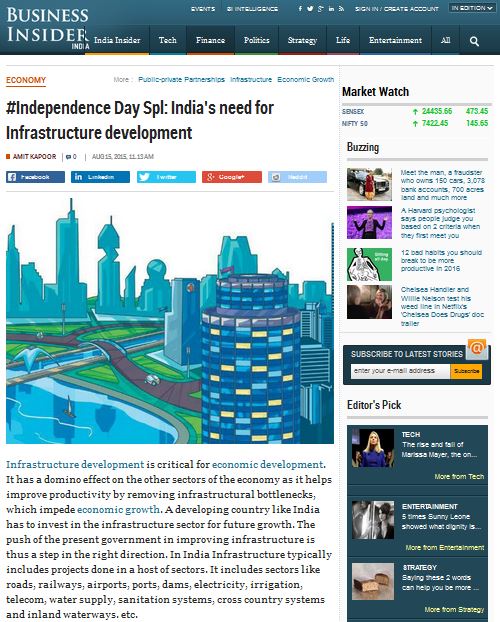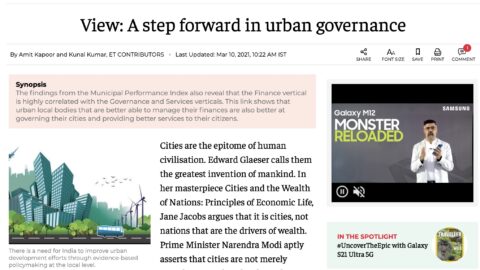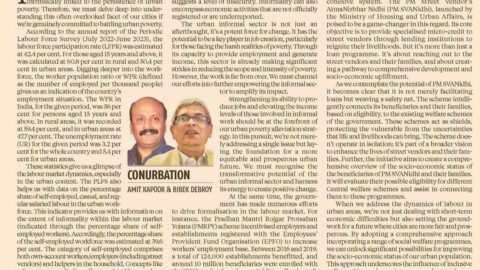Ties are viewed primarily through the lens of economic progress, but they are the living embodiment of our cultural heritage
By Dr Amit Kapoor and Bibek Debroy
Inputs by Jessica Duggal
Cities have always been the sites of cultural and historical movements globally. Even though it tends to become challenging to delineate what has been urban about these movements, it can’t be stressed enough that cities are the living entities that carry the remnants of history ahead. Cities have often been looked at from a purely economic lens as hubs for growth and development due to their industrial setups that contribute to increasing productivity. However, its socio-cultural manifestations have had a significant influence in shaping a region’s culture, its subjectivity and its aesthetic visibility. India’s history is replete with such cities of significance that did not only emerge as key economic centres during that time but also captured great socio-political moments of the country. For instance, on 15th August 1947, at the stroke of midnight, India’s first Prime Minister addressed the citizens of independent India from New Delhi, thus making the city an integral part of the idea of India. While Delhi has always remained a centre of politics in our country as it has been the capital of several empires beginning from the 8th century, cities like Bombay (now Mumbai), Madras (now Chennai) and Calcutta (now Kolkata) also emerged as important centres of politics, culture and economics. Going as back as 600 BCE, the emergence of sixteen Mahajanapadas was termed as the second urbanisation, for it marked the break from a predominantly tribal living and agrarian economy to a rise of trade and culture and an increase in the number of settlers. Despite cities having emerged purely in relation with emerging markets, their cultural ties remained strong.
If one is to outline India’s cultural odyssey through its cities, one walks through the three distinct periods of early, medieval and colonial India. Over the centuries, India witnessed the rise and fall of several dynasties and empires, each leaving its mark on the urban landscape. For instance, the Mauryan and Gupta Empires contributed to the establishment of cities that became centres of art, learning, and trade. The architecture of this period, showcased by the ornate Ajanta and Ellora caves, melded various cultural influences, including indigenous styles and foreign inspirations. The medieval period ushered in a wave of Islamic architecture and urbanisation through the Delhi Sultanate and the Mughal Empire. Cities like Delhi, Agra, and Fatehpur Sikri became epicentres of culture, blending Persian, Central Asian, and Indian elements. The grandeur of the Taj Mahal, with its fusion of Islamic and Indian architectural styles, stands as an enduring symbol of this synthesis. With the arrival of European colonial powers, India’s urbanisation took a new turn. The British East India Company established administrative centres and trade hubs, leaving behind an architectural legacy juxtaposing British neo-classical styles with Indian aesthetics. During this very time, Mumbai, Kolkata, and Chennai emerged as epicentres of commerce and cultural exchange.
William Digsby has drawn a picture of India’s urbanisation as that of being divided in two – between the India of people (Hindostan) and India of the British (Anglostan); one India existed between the railway lines, and the other existed for the colonisers. This depiction highlighted the living dichotomy in how urban spaces developed during the British rule and also signalled towards the space that existed between both lands – one may never cross the other but only see from afar. It is rather unfortunate that India’s urban history remains virtually missing even when the first census was recorded back in 1881. Even when there has been a considerable rise in the urban population, it has become difficult to ascertain the type and nature of the urban population, making the task of a historical investigation into the history of India’s urbanisation challenging. Nonetheless, the cultural history of India’s cities does reveal some common threads, which are – i) religious diversity and co-existence, ii) architectural syncretism, iii) the rise of trade and commerce and iv) centres of learning and art.
India’s urban history illustrates the dynamic interplay between tradition and modernity. While cities have embraced modern infrastructure and technology, they have also strived to preserve cultural heritage and traditional practices. This balance highlights the importance of maintaining cultural roots amidst rapid urban development. At the same time, public spaces, temples, markets, and other communal areas have played a pivotal role in shaping cultural identity and fostering a sense of community. These spaces serve as stages for cultural performances, interactions, and shared experiences, reinforcing a collective sense of belonging. Amidst this, a standout feature has been that throughout history, Indian cities have adapted their urban planning to changing social, economic, and cultural needs. The ability to adjust urban layouts and infrastructure while preserving essential cultural elements demonstrates the importance of flexible and adaptive urban planning. India’s cities have demonstrated remarkable cultural continuity and resilience over millennia. Despite the rise and fall of empires, invasions, and socio-economic changes, elements of culture such as architecture, festivals, and traditions have persisted, showcasing the enduring power of cultural values.
The article was published with Business Standard on August 24, 2023.

